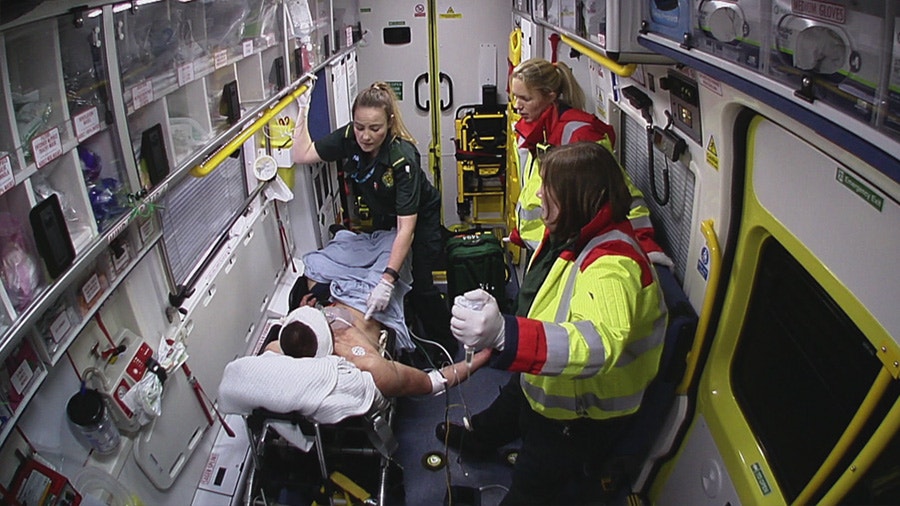Image Source: Google
Emergency medical services (EMS) play a vital role in our healthcare system by providing immediate care to those in need during medical emergencies. From traumatic injuries to life-threatening conditions, emergency medical services professionals are on the front lines, saving lives and making a difference in our communities. In recent years, there have been significant advancements in EMS that have revolutionized the way we respond to emergencies and provide care to patients. This article explores how EMS is transforming the healthcare landscape, from trauma to triumph.
The Evolution of Emergency Medical Services
Emergency medical services have come a long way since their inception. What began as basic transport services to hospitals has evolved into sophisticated, life-saving systems that provide advanced medical care in the field. Here are some key developments in the evolution of EMS:
Key Developments in EMS
- Introduction of paramedics: The introduction of paramedics in the 1970s brought advanced medical skills to the field, allowing for on-site treatment of patients with more complex medical needs.
- Advancements in technology: The use of advanced medical equipment, such as ECG monitors and defibrillators, has significantly improved the ability of EMS professionals to diagnose and treat patients in the field.
- Integration of telemedicine: Telemedicine technology enables EMS providers to consult with physicians in real-time, leading to better decision-making and improved patient outcomes.
- Community paramedicine programs: Community paramedicine programs extend the role of paramedics beyond emergency response to provide preventive care and chronic disease management in the community.
Enhancing Prehospital Care
Prehospital care is a critical component of EMS that can greatly impact patient outcomes. By providing timely and effective care at the scene of an emergency, EMS professionals can stabilize patients and improve their chances of survival. Here are some ways EMS is enhancing prehospital care:
Improvements in Prehospital Care
- Rapid response times: EMS agencies are continuously working to improve response times to ensure that patients receive care as quickly as possible.
- Training and education: EMS professionals undergo rigorous training and education to stay up-to-date on the latest medical advancements and best practices in prehospital care.
- Collaboration with hospitals: EMS agencies are partnering with hospitals to establish protocols for seamless patient handoffs, ensuring continuity of care from the field to the hospital.
- Mobile integrated healthcare: EMS providers are increasingly adopting mobile integrated healthcare models that focus on delivering proactive, preventive care to patients in their homes.
Utilizing Technology in EMS
Technology plays a crucial role in modern EMS systems, enabling EMS providers to deliver more efficient and effective care to patients. From electronic patient care records to GPS tracking systems, technology has transformed the way EMS operates. Here are some ways technology is being utilized in EMS:
Technological Advancements in EMS
- Electronic patient care records (ePCR): ePCR systems allow EMS providers to record patient information electronically, improving documentation accuracy and information sharing with hospitals.
- Telemedicine and telehealth: Telemedicine technology enables EMS providers to remotely consult with physicians, share data, and receive medical direction in real-time.
- GPS tracking and routing software: GPS technology helps EMS agencies track and route ambulances more efficiently, reducing response times and improving overall system performance.
- Mobile apps: EMS mobile apps provide quick access to critical information, such as drug dosages, treatment protocols, and medical references, enhancing the delivery of care in the field.
Improving Patient Outcomes
The ultimate goal of EMS is to improve patient outcomes by providing timely, high-quality care to those in need. By continuously striving for excellence and embracing innovation, EMS is making a significant impact on healthcare delivery and patient survival rates. Here are some ways EMS is improving patient outcomes:
Strategies for Improving Patient Outcomes
- Quality improvement initiatives: EMS agencies are implementing quality improvement programs to monitor performance, identify areas for improvement, and enhance patient care protocols.
- Evidence-based practices: EMS providers are adopting evidence-based practices to ensure that clinical decisions are based on the best available research and data.
- Community partnerships: EMS agencies are collaborating with community organizations and healthcare providers to promote public health initiatives, improve access to care, and address social determinants of health.
- Continuous training and education: EMS professionals undergo ongoing training and education to enhance their skills, stay current on best practices, and deliver high-quality care to patients.

